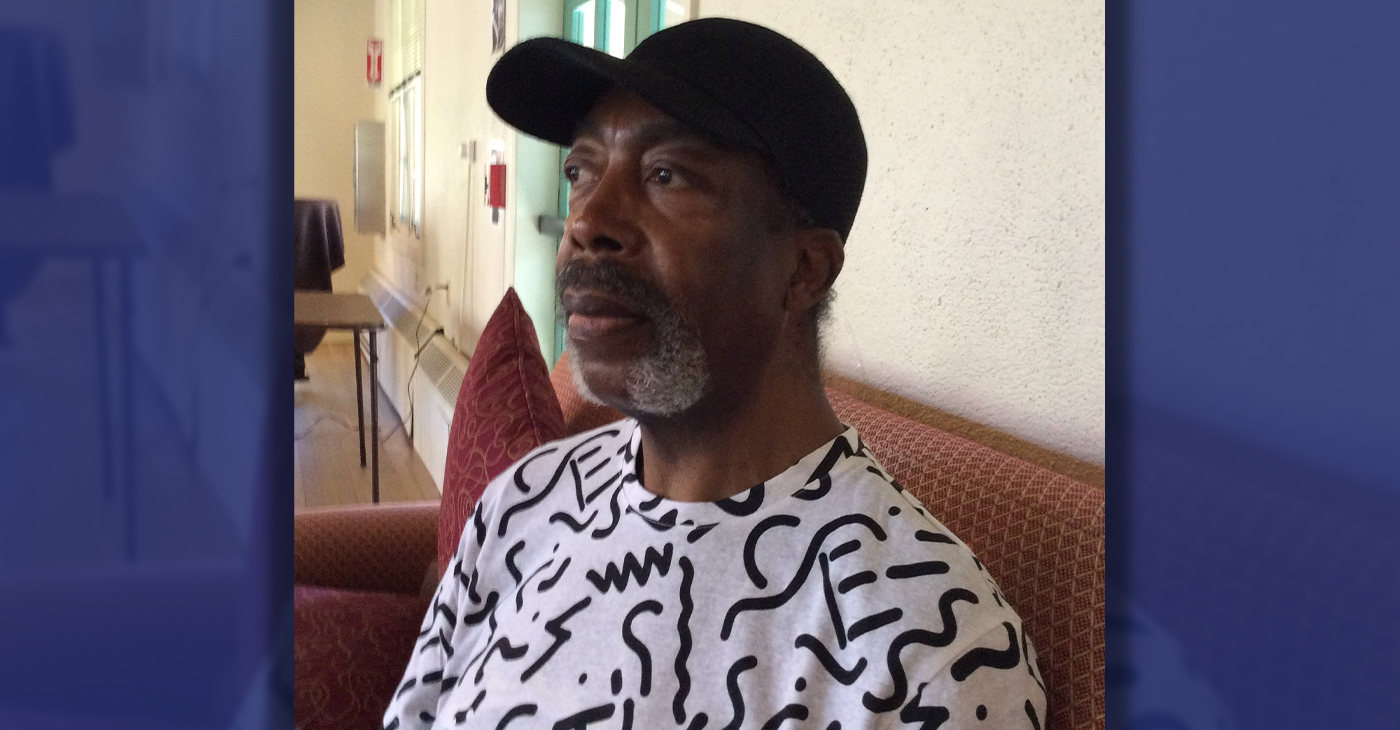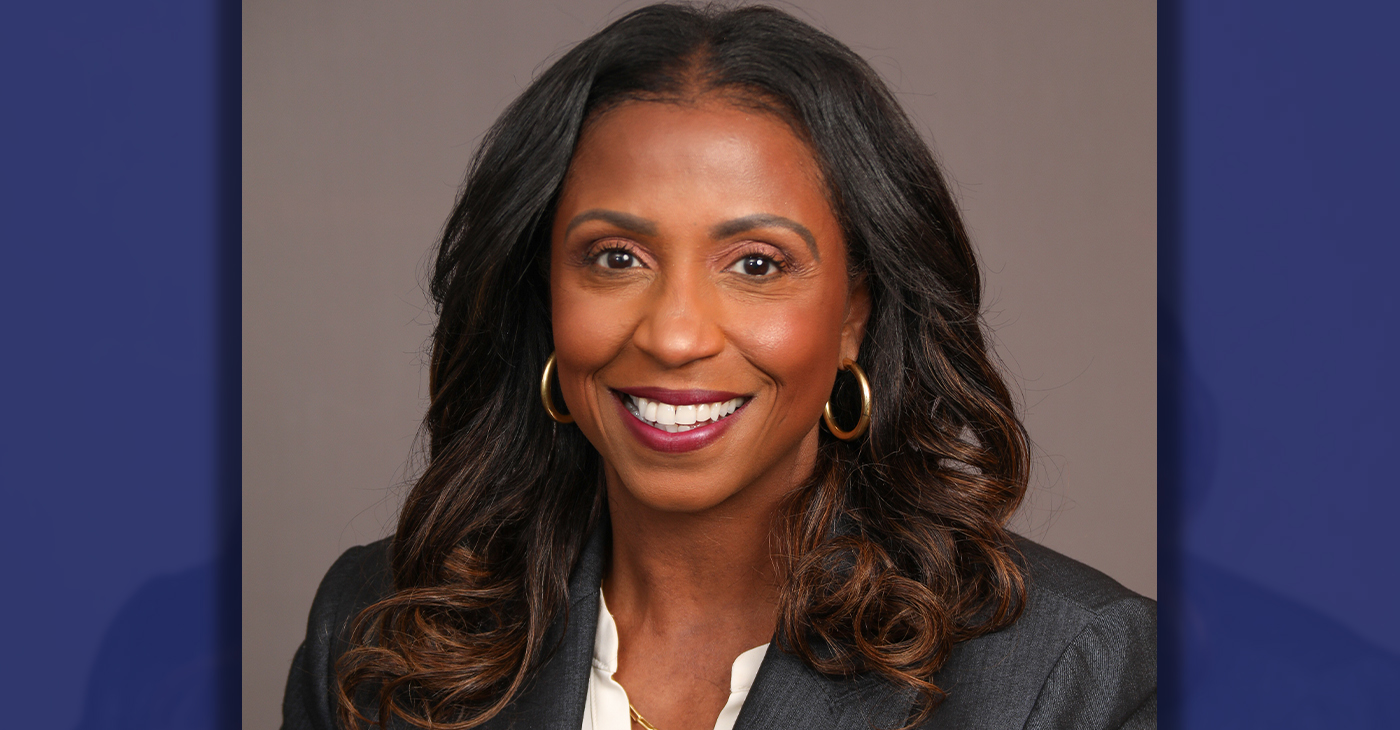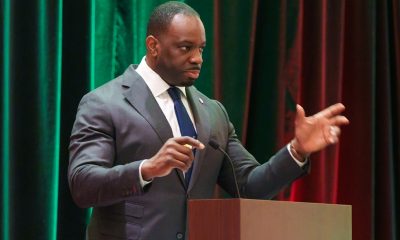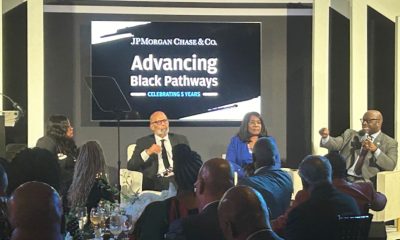Business
Black Women Increasingly Seek the Corner Office
by Jessica R. Key
Special to the NNPA from the Indianapolis Recorder
In business, there’s long been a perception among Black employees that they must work harder than their white counterparts to rise to the top. A recent report suggests Black women in particular are eyeing the executive office more so than their white peers.
A study conducted by the Center for Talent Innovation (CTI), a think tank which conducts research on the challenges diverse individuals face in the workplace, published a report that shows Black women are more likely than white women to aspire to a powerful position with a prestigious title.
“Black Women: Ready to Lead” also uncovers that Black women also perceive a powerful position as the means to achieving their professional goals and are confident they can succeed in the role. Yet, despite their ambition and qualifications, Black women often feel stalled in their careers.
This inertia can be attributed to the unconscious biases and the lack of advocacy these women face in the workplace.
The study was inspired by a report conducted last year by CTI that looked at women in the U.S., U.K. and Germany and found women often were not seeking positions of power. When they dug deeper, they discovered other racial groups had ambivalence to power except Black women.
Mellody Hobson, president of Ariel Investments and wife of film director and producer George Lucas, penned the report’s foreword.
“What sparked this was through some of the interviews conducted. Some of the African-American executives commented they really weren’t seeing an ambivalence to power from Black women,” said Tai Green, senior vice president at CTI and co-author of Black Women: Ready to Lead. “They said executive leadership positions, they find, are a hard sell for this group.”
Green and her team then focused on women in the U.S. to see if the data aligned with their qualitative research. All Black women questioned had a college education and oftentimes had leadership experience outside of their jobs.
“We saw the narrative around Black women was one that isn’t really fraught with talk of the confidence gap or a need to ‘lean in’ as a group, but is far more likely to aspire to positions of power,” said Green.
She added that Black women are three times more likely than their peers to go for the top spot. Why?
Green said Black women responded they were raised hearing statements such as “you need to work twice as hard to be viewed equal to your peers” or “a lot of people struggled and sacrificed to make sure you have the opportunity to compete.”
“There was a deeply rooted understanding of what it means to not have a voice in this country for so long that really drove them to go for it,” said Green. This attitude stemmed from both obligation and personal ambition.
Green said where Blacks are similar to their white counterparts were among five things: the ability to flourish; to excel; to reach their purpose; the ability to empower others and be empowered; and have the ability to earn well.
Looking closely at attitudes about women’s finances, there was a gap. Fifty four percent of white women listed “the ability to earn well” as being important. For Black women, it’s 84 percent.
“We found that Black women list financial independence as a top goal,” said Green.
One possible contributing factor: Black women are more likely to be unmarried and supporting others such as raising nieces and nephews or significantly giving back to their community. To these Black women, having a top job means more money in order to completely and independently fulfill their financial obligations.
Green, who is African-American, said though Black women aspire to a powerful position with a prestigious title, external data shows there are still less than one percent of Black women who are CEOs of Fortune 500 companies.
“When we looked at the barriers to this, we found there is unconscious bias in the workplace. Black women said they felt they needed to conform to the traditional white, male standards in order to fit in or be seen as leadership material,” said Green.
Additionally, there is a lack of sponsorship or people speaking out on Black women’s behalf. Only 11 percent of Black women have senior level advocates. Hobson, who was named one of Time magazine’s most influential people, said instead of primarily looking to another Black person, Black women should look to others outside of their race as an advocate.
Angela Dabney, vice president of global initiatives and transformational giving at United Way of Central Indiana understands why the study may have been conducted, but strongly maintains she believes that Black women aspire to ascend barriers their mothers and grandmothers faced.
“I don’t necessarily think it’s the higher title. It’s getting beyond the societal expectation for them that has been for so many years,” Dabney added. “I feel Black women feel the need to make change, to change the world, and to do that, they need a certain level of power.”
Dabney said instead of chasing titles, Black women should strive for a good work/life balance and do what makes them feel fulfilled.
Dabney said her story reflects her beliefs. She worked in corporate America for many years and found she enjoyed volunteer work. When she moved to Indianapolis, she sought a job in the nonprofit sector and said the United Way is the place where she feels she has the greatest opportunity to make the greatest change. She develops strategies to ensure local initiatives align with nationwide United Way initiatives. She also works with high-level donors.
“Of course it was putting in the long hours, mentors and role models, but I have a passion for what I do,” said Dabney. “Women should go for positions they are passionate about. Going to work is much more fun when it matters to you.”
Green said she didn’t intend for the report to be polarizing, but wanted to show the comparisons between white and Black professionals because the narrative around white women is so widely reported.
“Because Black women’s background, experiences, and challenges differ from that of white women, we thought it was critical to show a side-by-side comparison and for organizations to see that taking a one-size-fits-all approach won’t work,” said Green.
WHAT BLACK WOMEN WANT MOST FROM WORK
• 91% Ability to flourish
• 89% Ability to excel
• 85% Ability to reach for meaning and purpose
• 81% Ability to earn well
• 73% Ability to empower others and be empowered
Bay Area
Mayor Breed Proposes Waiving City Fees for Night Markets, Block Parties, Farmers’ Markets, Other Outdoor Community Events
Mayor London N. Breed introduced legislation on April 26 to encourage and expand outdoor community events. The first will waive City fees for certain events, making them less costly to produce. The second will simplify the health permitting for special event food vendors through the creation of an annual permit. Both pieces of legislation are part of the Mayor’s broader initiative to bring vibrancy and entertainment to San Francisco’s public right of ways and spaces.

Mayor’s Press Office
Mayor London N. Breed introduced legislation on April 26 to encourage and expand outdoor community events.
The first will waive City fees for certain events, making them less costly to produce. The second will simplify the health permitting for special event food vendors through the creation of an annual permit. Both pieces of legislation are part of the Mayor’s broader initiative to bring vibrancy and entertainment to San Francisco’s public right of ways and spaces.
Outdoor community events are integral to San Francisco’s vibrant culture and sense of community. These events include night markets, neighborhood block parties and farmers markets, and bolster the City’s economy by supporting local businesses and attracting tourists eager to experience San Francisco’s unique charm and food scene.
They offer residents, workers and visitors, opportunities to engage with local artists, musicians, and food vendors while enjoying the San Francisco’s stunning outdoor spaces and commercial corridors.
The legislation will allow for more and new community gatherings and for local food vendors to benefit from the City’s revitalization.
“San Francisco is alive when our streets are filled with festivals, markets, and community events,” said Breed. “As a city we can cut fees and streamline rules so our communities can bring joy and excitement into our streets and help revitalize San Francisco.”
Fee Waiver Legislation
The events that can take advantage of the new fee waivers are those that are free and open to the public, occupy three or fewer city blocks, take place between 8 a.m. and 10 p.m., and have the appropriate permitting from the ISCOTT and the Entertainment Commission.
The applicant must be a San Francisco based non-profit, small business, Community Benefit District, Business Improvement District, or a neighborhood or merchant association. Fees eligible for waiver include any application, permit, and inspection/staffing fees from San Francisco Municipal Transportation Agency, Department of Public Health, Fire Department, Entertainment Commission, and Police Department.
Currently, it can cost roughly anywhere between $500-$10,000 to obtain permits for organized events or fairs, depending on its size and scope. Organizations and businesses are limited to a maximum of 12 events in one calendar year for which they can receive these fee waivers.
Food Vendor Streamlining Legislation
The second piece of legislation introduced will help special event food vendors easily participate in multiple events throughout the year with a new, cost-effective annual food permit. Food vendors who participate in multiple events at multiple locations throughout the year will no longer need to obtain a separate permit for each event. Instead, special event food vendors will be able to apply and pay for a single annual permit all at once.
“Many successful food businesses either begin as pop-up vendors or participate in special events to grow their business,” says Katy Tang, Director of the Office of Small Business. “Giving them the option for an annual special event food permit saves them time and money.”
Currently, food vendors are required to get a Temporary Food Facility (TFF) permit from the Department of Public Health (DPH) in order to participate in a special event, among permits from other departments.
Currently, each special event requires a new permit from DPH ranging from $124-$244, depending on the type of food being prepared and sold. Last year, DPH issued over 1,500 individual TFF permits. With the new annual permit, food vendors selling at more than four to six events each year will benefit from hundreds of dollars in savings and time saved from fewer bureaucratic processes.
“This legislation is a step in the right direction to make it easier for food vendors like me to participate in citywide events,” said Dontaye Ball, owner of Gumbo Social. “It saves on time, money and makes it more effective. It also creates a level of equity.”
Bay Area
Faces Around the Bay: Sidney Carey
Sidney Carey was born in Dallas, Texas. He moved with his family to West Oakland as a baby. His sister is deceased; one brother lives in Oakland. Carey was the Choir Director at Trinity Missionary Baptist Church for 18 years.

By Barbara Fluhrer
Sidney Carey was born in Dallas, Texas. He moved with his family to West Oakland as a baby. His sister is deceased; one brother lives in Oakland.
Carey was the Choir Director at Trinity Missionary Baptist Church for 18 years.
He graduated from McClymonds High with a scholarship in cosmetology and was the first African American to complete a nine-month course at the first Black Beauty School in Oakland: Charm Beauty College.
He earned his License, and then attended U.C., earning a secondary teaching credential. With his Instructors License, he went on to teach at Laney College, San Mateo College, Skyline and Universal Beauty College in Pinole, among others.
Carey was the first African American hair stylist at Joseph and I. Magnin department store in Oakland and in San Francisco, where he managed the hair stylist department, Shear Heaven.
In 2009, he quit teaching and was diagnosed with Congestive Heart Failure. He was 60 and “too old for a heart transplant”. His doctors at California Pacific Medical Center (CPMC) went to court and fought successfully for his right to receive a transplant. One day, he received a call from CPMC, “Be here in one hour.” He underwent a transplant with a heart from a 25-year- old man in Vienna, Austria
Two years later, Carey resumed teaching at Laney College, finally retiring in 2012.
Now, he’s slowed down and comfortable in a Senior Residence in Berkeley, but still manages to fit his 6/4” frame in his 2002 Toyota and drive to family gatherings in Oakland and San Leandro and an occasional Four Seasons Arts concert.
He does his own shopping and cooking and uses Para Transit to keep constant doctor appointments while keeping up with anti-rejection meds. He often travels with doctors as a model of a successful heart-transplant plant recipient: 14 years.
Carey says, “I’m blessed” and, to the youth, “Don’t give up on your dreams!”
Business
Maximizing Your Bank Branch Experience
In a world of online tools that let you make banking transactions with the touch of a button, the idea of visiting a branch might seem unnecessary. However, if you haven’t visited your local branch recently, you might be surprised by what it has to offer. Your branch is much more than a place to deposit and withdraw money – it can offer the opportunity to build valuable relationships with people who can help you achieve financial independence.

Sponsored by JPMorgan Chase & Co.
In a world of online tools that let you make banking transactions with the touch of a button, the idea of visiting a branch might seem unnecessary.
However, if you haven’t visited your local branch recently, you might be surprised by what it has to offer. Your branch is much more than a place to deposit and withdraw money – it can offer the opportunity to build valuable relationships with people who can help you achieve financial independence.
Diedra Porché, Head of Community and Business Development at Chase, talks about how the bank model has evolved to maximize the branch experience for customers; how connecting with your local branch team can help you think differently about money and investing for your future.
How can a customer feel connected to a bank branch?
I love that question because we ask ourselves the same thing every day. Being part of the community means meeting with local leaders to find out what they need from us and then designing our branches around that. For example, at some of our community branches we have what we call a living room where we can host financial workshops, small business pop-up shops or nonprofit organization meetings. We also hire locally. You feel much more connected talking about financial aspirations with people from your community who went to the same high school, place of worship or maybe frequented the same recreation center down the street when they grew up.
How can I build a relationship with my bank?
Customers should feel comfortable sharing their goals, needs and wants with their banker. Also, it helps to remember the Community Manager is there to help solve your finance challenges and build a roadmap for success. You might have a short-term or long-term goal to open a business, build your credit, become debt-free, buy a home, or save for retirement, and our community team can help. At Chase, we strive to make dreams possible for everyone, everywhere, every day. Your financial future starts with building those relationships.
How can customers change negative perceptions they have about managing their money?
Far too often, customers are intimidated when they visit a bank. Our goal is to demystify banking and money myths empowering people to make the right decisions. For example, a big myth is assuming you need a lot of money to have a bank account. You don’t! Another myth is you need to carry a balance on your credit card to build credit — actively using your credit card can demonstrate that you can use credit responsibly but carrying a balance won’t necessarily improve your credit score. Finally, understanding mobile and online banking safety is key. There are so many safeguards and protections in place to guard your personal information and funds.
What’s an easy step one can take to shift their financial behavior right now?
Cultivating self-awareness is a good first step. Start by taking inventory of your spending. Be honest with yourself about what you need and what you want. Too often, people confuse the two, which leads to bad decisions. Rent is something you need to pay. An extra pair of shoes is something you may want but before you buy them ask yourself if that’s the best use of your hard-earned money. Too often, our beliefs and our fears shape our financial realities. If any of those beliefs are limiting your financial behavior, it’s important to question and examine them, and then decide you’re open to learning something different.
What’s one perception about banking that you’d like to change?
I think folks are surprised there are so many resources available and accessible both at our branches and online, it’s always a good idea to visit a nearby branch and speak to a Community Manager or banker. Outside of what we offer in-branch, our teams also work with local neighborhood partners who provide a variety of services to support the community, businesses and residents. I received a unique piece of feedback from an employee who started with the bank and had lived in the same community his whole life. When he visited his local community branch, he said, “Diedra, when I walked in, I felt dignified.” Every time I recount that story, it warms my heart because that’s what we want — we want our centers to belong to the community.
-

 Community3 weeks ago
Community3 weeks agoFinancial Assistance Bill for Descendants of Enslaved Persons to Help Them Purchase, Own, or Maintain a Home
-

 Activism4 weeks ago
Activism4 weeks agoOakland Post: Week of April 3 – 6, 2024
-

 Business3 weeks ago
Business3 weeks agoV.P. Kamala Harris: Americans With Criminal Records Will Soon Be Eligible for SBA Loans
-

 Activism3 weeks ago
Activism3 weeks agoOakland Post: Week of April 10 – 16, 2024
-

 Community3 weeks ago
Community3 weeks agoAG Bonta Says Oakland School Leaders Should Comply with State Laws to Avoid ‘Disparate Harm’ When Closing or Merging Schools
-

 Community2 weeks ago
Community2 weeks agoOakland WNBA Player to be Inducted Into Hall of Fame
-

 Community2 weeks ago
Community2 weeks agoRichmond Nonprofit Helps Ex-Felons Get Back on Their Feet
-

 Community2 weeks ago
Community2 weeks agoRPAL to Rename Technology Center for Retired Police Captain Arthur Lee Johnson

























































